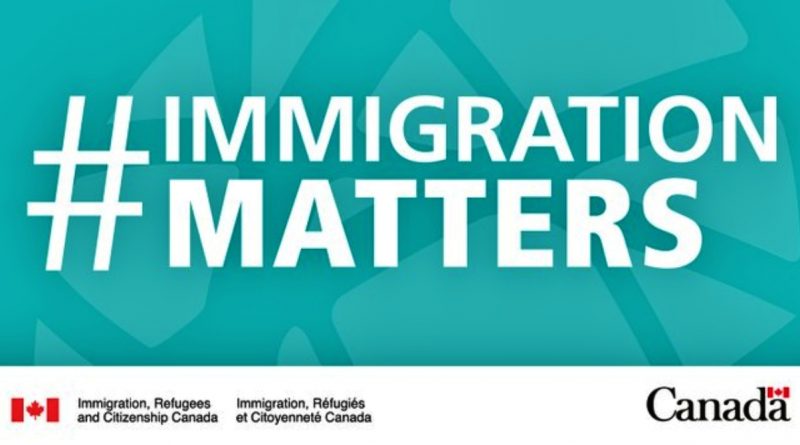IRCC News: The 2023-2025 Immigration Levels Plan
| Immigrant Category | 2025note 10 | ||||
|---|---|---|---|---|---|
| Target | Low Rangenote 11 | High Rangenote 11 | |||
|
Overall Planned Permanent Resident Admissions |
500,000 | 442,500 | 550,000 | ||
| Economic | Federal High Skillednote 1 | 114,000 | 93,500 | 121,000 | |
| Federal Economic
Public Policiesnote 2 |
– | – | – | ||
| Federal Businessnote 3 | 6,000 | 4,000 | 8,000 | ||
| Economic Pilots:note 4
Caregiversnote 5; Agri-Food Pilot; Rural and Northern Immigration Pilot; Economic Mobility Pathways Project |
14,750 | 9,000 | 19,750 | ||
| Atlantic Immigration Program | 14,500 | 8,500 | 16,500 | ||
| Provincial Nominee Program | 117,500 | 112,000 | 129,250 | ||
| Quebec Skilled Workers and Businessnote 6 |
To be determined | ||||
| Total Economic | 301,250 | 265,000 | 326,000 | ||
| Family | Spouses, Partners and Children | 82,000 | 77,000 | 88,000 | |
| Parents and Grandparents | 36,000 | 30,750 | 48,000 | ||
| Total Family | 118,000 | 107,000 | 135,000 | ||
| Refugees and Protected Persons | Protected Persons in Canada and Dependents Abroad |
29,000 | 26,000 | 35,000 | |
| Resettled Refugees – Government-Assistednote 7 |
15,250 | 12,000 | 17,000 | ||
| Resettled Refugees – Privately Sponsored |
28,250 | 23,000 | 30,000 | ||
| Resettled Refugees – Blended Visa Office-Referred |
250 | – | 400 | ||
|
Total Refugeesnote 8 and Protected Persons |
72,750 | 64,000 | 80,000 | ||
| Humanitarian & Compassionate and Other |
Total Humanitarian & Compassionate and Othernote 9 |
8,000 | 6,500 | 9,000 | |
| French‑speaking immigration admissions necessary to meet 2023 objective in Francophone Immigration Strategy (PDF, 582 KB)Footnote 12 | |||||
Footnotes
- Footnote 1
- Includes the Federal Skilled Worker Program, Federal Skilled Trades Program, and Canadian Experience Class.
- Footnote 2
- Includes the time-limited temporary public policies for temporary resident to permanent resident pathways, with all admissions anticipated by the end of 2023.
- Footnote 3
- Includes the Start-up Visa Program and the Self-employed Persons Program.
- Footnote 4
- Admissions under the Municipal Nominee Program will be included within this category, following program launch.
- Footnote 5
- Includes admissions in the Home Child-Care Provider Pilot and the Home Support Worker Pilot. Applications received under the legacy caregiver pilots and through the interim pathway will be processed to completion. Some admissions in this category are destined for Quebec.
- Footnote 6
- Under the Canada-Quebec Accord, Quebec has full responsibility for the selection of immigrants destined to Quebec, with the exception of the family class and protected persons.
- Footnote 7
- Includes the stream for human rights defenders in need of protection, including women, journalists, and LGBTQ2 people.
- Footnote 8
- Includes admissions from Canada’s response to the situation in Afghanistan.
- Footnote 9
- Includes admissions of persons selected on humanitarian and compassionate grounds, for reasons of public policy, and in the permit holder class. This also includes some admissions from Canada’s response to the situation in Afghanistan.
- Footnote 10
- Notional targets and ranges for 2024 and 2025 will be confirmed or adjusted by November 1 of each year.
- Footnote 11
- Program and category specific ranges do not total to the overall ranges.
- Footnote 12
- The Government of Canada set an objective to increase Francophone immigration to reach a target of 4.4% French-speaking immigrants outside Quebec by 2023. This range indicates how many admissions within the federal levels plan would be necessary to meet that target in 2023, based on the overall ranges for admissions outside of Quebec. Once Quebec tables its 2023 immigration levels plan, this range may require updating.




